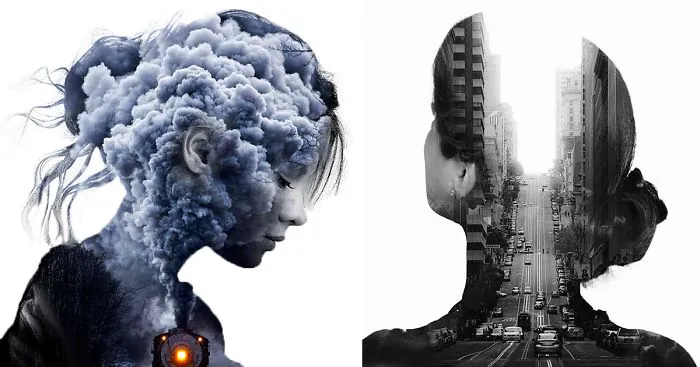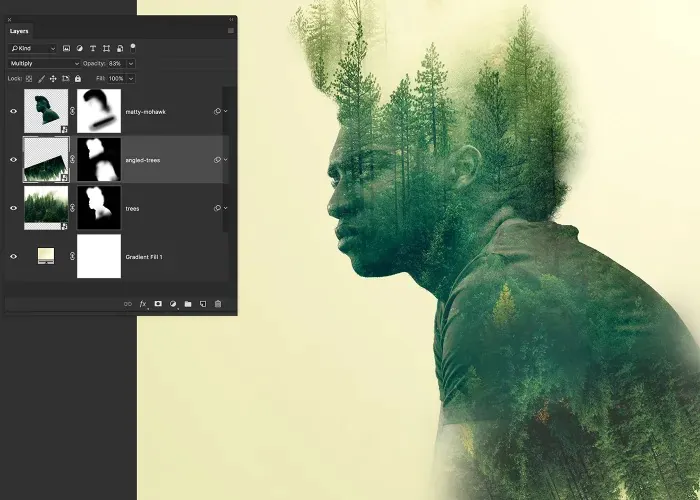
How To Harness Double Exposure Photo Editing For Visual Impact
In visual storytelling, Double exposure is a technique that transcends the boundaries of a single photograph, captivating viewers with its unique and striking compositions. Double exposure photo editing is an artistic realm where limitless creativity intertwines with amazing visual impact. This captivating technique seamlessly blends multiple images, allowing you to create captivating narratives, evoke emotions, and leave a lasting impression on your audience. Inquiring about the artistry of double exposure photo editing and exploring its core principles, essential techniques, and creative approaches can help you to harness its power and create visually stunning compositions. With careful manipulation of light, shadows, textures, and colours, you can craft mesmerizing visuals that evoke deep emotions and tell compelling stories.
Understanding Double Exposure Photography:
Double exposure photography is a captivating technique that merges two or more images into a single frame, resulting in a unique and visually striking composition. The concept of double exposure dates back to the early days of film photography when photographers accidentally or intentionally exposed the same frame multiple times, resulting in overlapping images. In the digital age, this technique has evolved with the help of advanced editing software, allowing photographers to achieve precise and intentional double exposures.
The significance of double exposure photography lies in its ability to create captivating visuals that go beyond the limitations of a single photograph. By merging two distinct images, photographers can convey a sense of narrative, evoke emotions, and create a dreamlike or surreal atmosphere. This technique enables artists to blend different subjects, textures, and colours, resulting in compositions rich in symbolism and depth.
To create a successful double exposure, it is crucial to carefully select the images that will be blended. The two images should complement each other thematically or visually, creating a harmonious fusion. For example, combining a portrait with elements of nature can create a powerful juxtaposition between humanity and the environment. It is important to consider the images’ tones, contrasts, and overall mood to ensure they work cohesively.
In the digital era, achieving double exposure is more accessible than ever. Many photo editing software programs offer dedicated tools and features specifically designed for double exposure editing. These tools allow photographers to adjust the images’ opacity, blending modes, and layering to achieve the desired effect. Additionally, advanced editing techniques such as masking and blending adjustments enable precise control over the final result.
By understanding the principles and techniques behind double exposure photography, photographers can explore new realms of creativity and storytelling. This technique offers endless possibilities for self-expression and artistic experimentation. Whether capturing portraits, landscapes, or abstract concepts, the art of double exposure photography allows photographers to transcend the boundaries of reality and create images that resonate deeply with viewers.
Essential Tools and Software for Double Exposure Editing:
Before indulging in double exposure editing, having the right tools and software at your disposal is important. These resources will enable you to bring your creative visions to life and achieve seamless and impactful double exposures. Here are some essential tools and software options to consider:
Camera Equipment:
When capturing images for double exposure editing, having a camera with manual exposure control and interchangeable lenses can provide greater flexibility and control over the final result. That adjusts the aperture, shutter speed, and ISO to precisely capture the images.
Image Editing Software:
You’ll need reliable image editing software to blend and edit your images. Adobe Photoshop is the industry standard and offers a wide range of powerful tools for double exposure editing. Other alternatives include GIMP (GNU Image Manipulation Program), Affinity Photo, and Pixlr. These software options provide layering, masking, and blending capabilities for creating seamless double exposures.
Image Organization and Management:
Efficiently organizing and managing your image library is crucial for a smooth editing workflow. Consider using software like Adobe Lightroom or Capture One to import, organize, and categorize your images. These tools allow you to add metadata, apply keywords, and create collections to access your double exposure source images easily.
Plugins and Extensions:
Extend the capabilities of your chosen image editing software with plugins and extensions specifically designed for double exposure editing. These plugins provide additional features and effects to enhance your workflow and creativity. Examples include Exposure X6, Alien Skin Exposure, and Nik Collection by DxO.
Tutorials and Online Resources:
Familiarize yourself with tutorials, guides, and online resources that provide step-by-step instructions and inspiration for double exposure editing. Websites, blogs, and YouTube channels dedicated to photography and editing can be valuable sources of knowledge and inspiration. Explore communities like Adobe Creative Cloud, Phlearn, and Fstoppers for tutorials, forums, and community engagement.
Investing in the right tools and software will empower you to explore the vast potential of double exposure editing. Experiment with different options, familiarize yourself with the features and find the tools that align with your creative vision. Remember, the software is a means to express your creativity, so focus on honing your skills and techniques to craft breathtaking double exposures that leave a lasting impact on viewers.
Preparing Images for Double Exposure Editing:
Before diving into double exposure editing, preparing your images to ensure optimal results is essential. Proper preparation will help you achieve seamless blending, harmonious composition, and visual impact. Here are key steps to consider when preparing images for double exposure editing:
Select Complementary Images:
Choose two or more images that complement each other thematically, aesthetically, or conceptually. Look for images with similar colours, tones, or visual elements to create a cohesive and harmonious blend.
Assess Image Quality:
Examine the quality of your selected images. Ensure they are sharp, properly exposed, and free from distractions. Perform basic edits, such as adjusting exposure, contrast, and white balance, to enhance the overall image quality.
Consider Image Compatibility:
Evaluate how well the selected images will blend. Pay attention to the composition, subject placement, and perspective. Experiment with different combinations to find the most compelling pairing that enhances the visual impact of the final double exposure.
Organize and Manage Image Layers:
When working with image editing software, organize your images in layers. Use separate layers for each image to maintain flexibility and control during editing. Renaming and organizing layers will streamline your workflow and make adjustments more manageable.
Back up Original Files:
It’s essential to preserve the original files of your images. Make backup copies before editing to ensure you can always revert to the original files if needed. This practice protects your work and allows you to experiment without fearing losing your original images.
By carefully selecting and preparing your images, you lay the foundation for successful double exposure editing. Take the time to evaluate image compatibility and quality, and organize your files efficiently. These steps will contribute to a smooth editing workflow and enhance the final visual impact of your double exposures.
Techniques for Double Exposure Photo Editing:
Mastering the techniques of double exposure editing is key to creating impactful and visually stunning compositions. You can seamlessly blend multiple images and unleash your creativity with the right tools and knowledge. Here are some essential techniques to enhance your double exposure photo editing skills:
Layering and Masking:
Use layering and masking techniques to blend multiple images. Each image should be placed on a separate layer, allowing you to control its visibility and adjust its position as needed. Utilize layer masks to selectively reveal or hide parts of each image, creating a smooth and seamless blend.
Adjusting Exposure and Contrast:
Fine-tune the exposure and contrast of each image to ensure they are well-balanced and visually cohesive. Use adjustment layers or tools in your editing software to modify brightness, highlights, shadows, and contrast. This step helps achieve a unified and balanced look in your double exposure composition.
Blending Modes and Opacity:
Try using various blending modes and opacity settings to achieve various effects and interactions between the images. Blending modes like Screen, Multiply, Overlay, and Soft Light can produce unique results. Adjust the opacity of each layer to control the intensity of the blend, creating subtle or bold effects.
Incorporating Texture and Patterns:
Add texture and patterns to your double exposure composition to create depth and visual interest. Overlay textures or patterns onto your images using blending modes or layer masks. Experiment with different textures like grunge, paper, or fabric to enhance the mood and add a distinctive touch to your composition.
Fine-tuning Colors and Hues:
Adjust the colours and hues of each image to ensure they harmonize and create a unified colour palette. Use colour adjustment tools, such as curves or colour balance, to match the tones and hues across the images. Consider desaturating certain elements or applying selective colour adjustments to create emphasis and visual impact.
Experimentation and Creative Effects:
Embrace experimentation and creative effects to push the boundaries of your double exposure editing. Explore techniques like multiple exposures, overlays, and compositing to achieve unique and artistic results. Play with different effects like blur, gradients, or light leaks to add a touch of creativity and enhance the overall visual impact.
Conclusion:
In conclusion, double exposure photo editing is a powerful technique that allows photographers and designers to unleash their creativity and create visually impactful compositions. By understanding the principles, employing essential techniques, and experimenting with various elements, you can master the art of double exposure and tell captivating visual stories that cast a lasting impact on viewers. Embrace this artistic journey and explore the limitless possibilities of double exposure editing.





